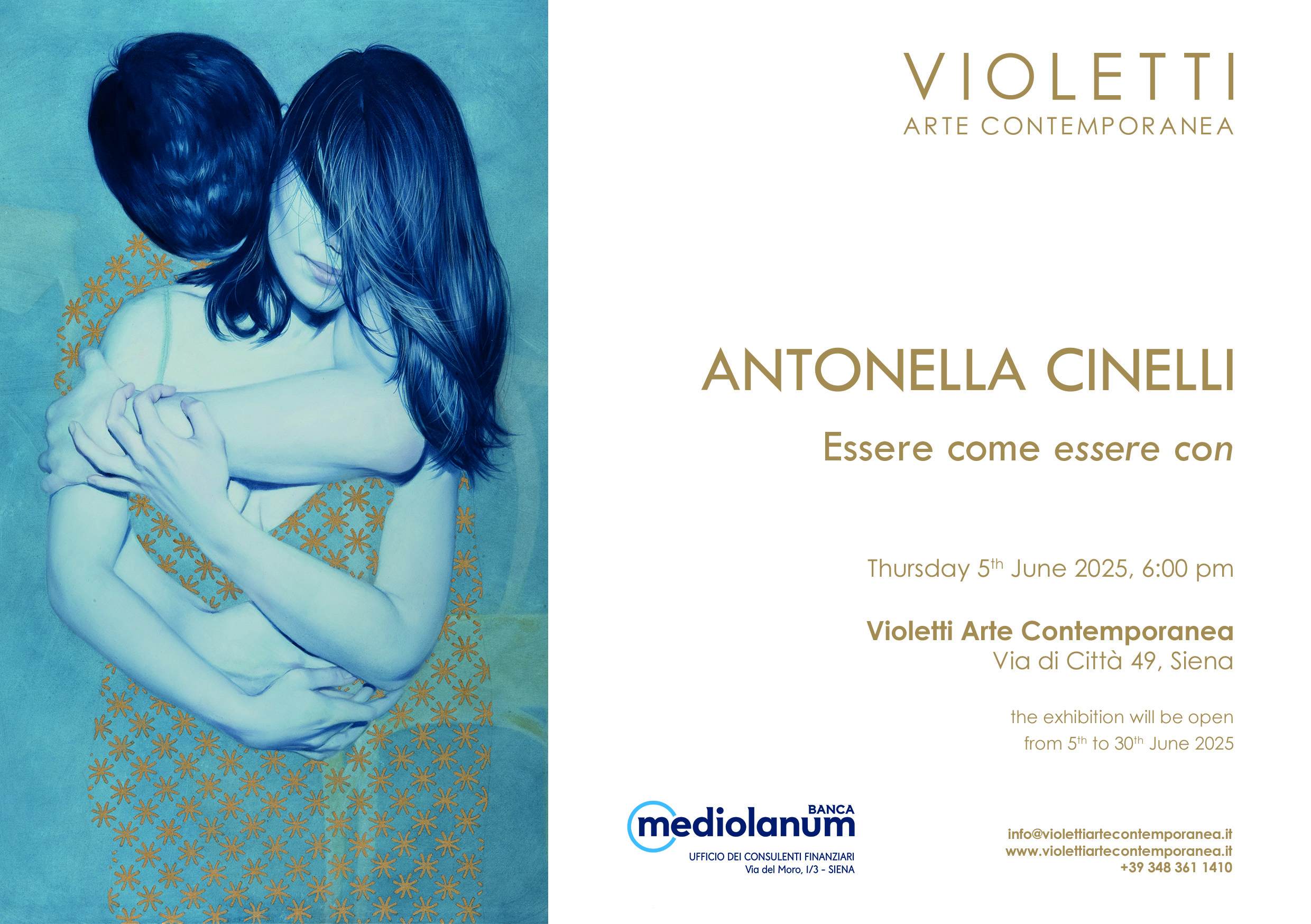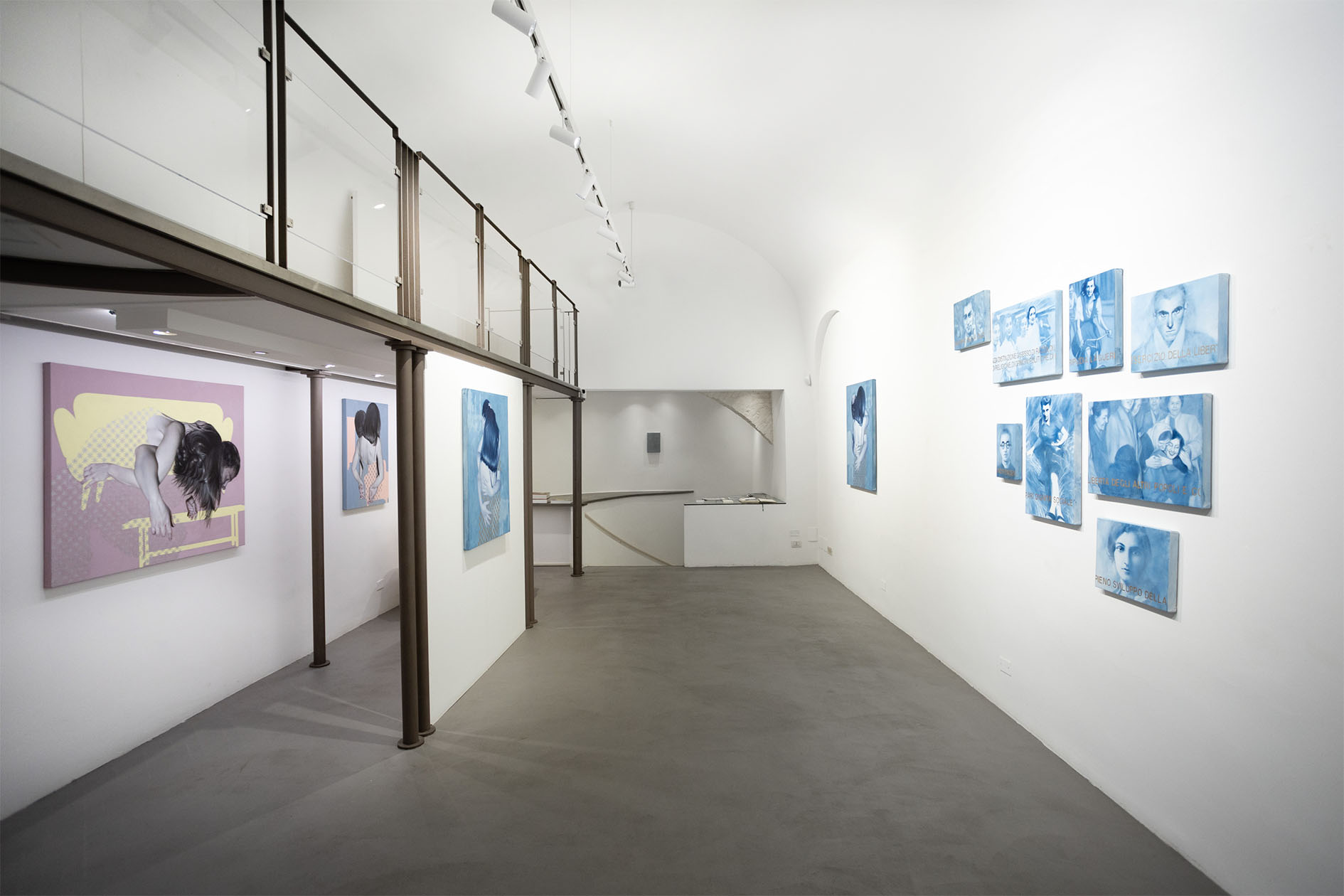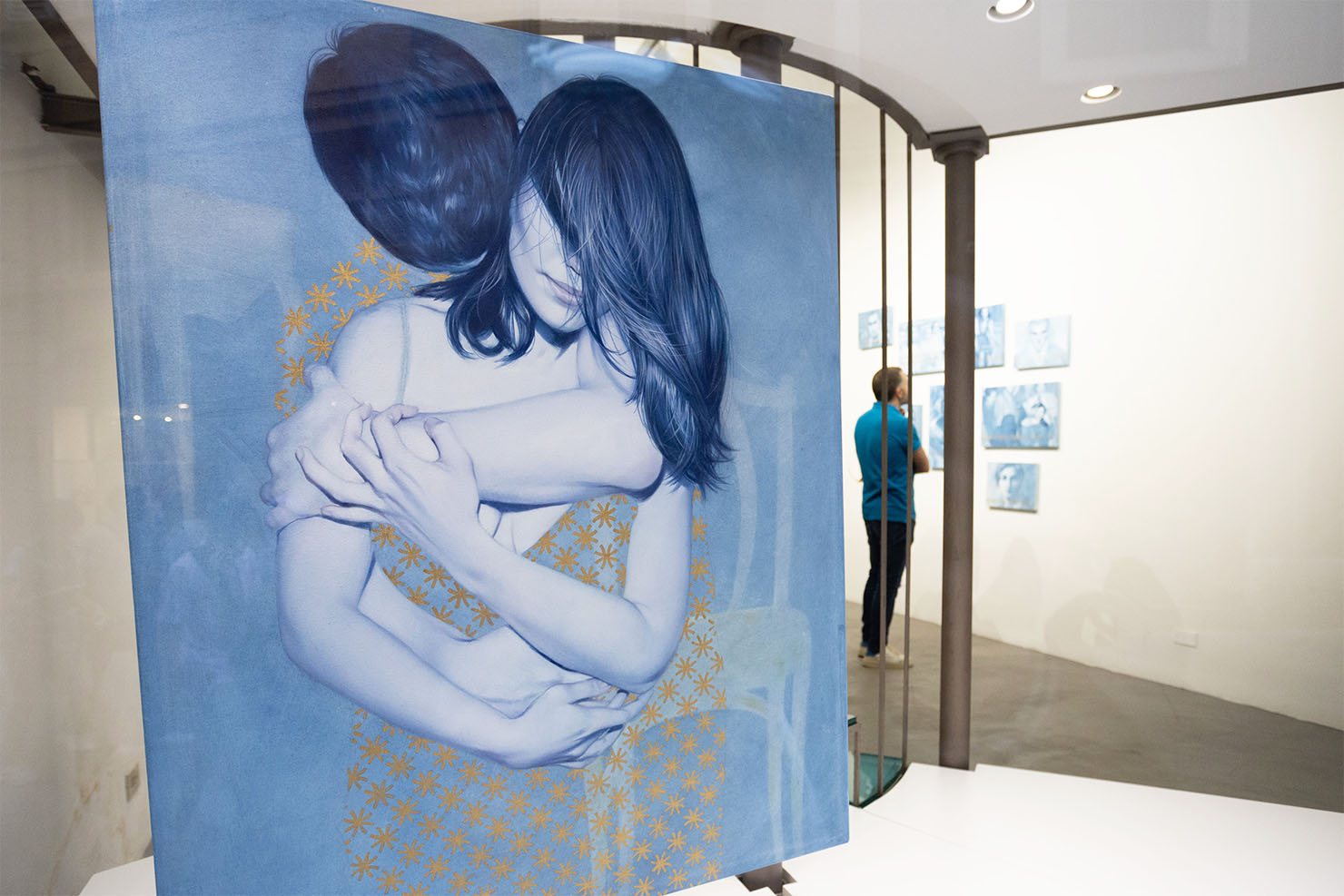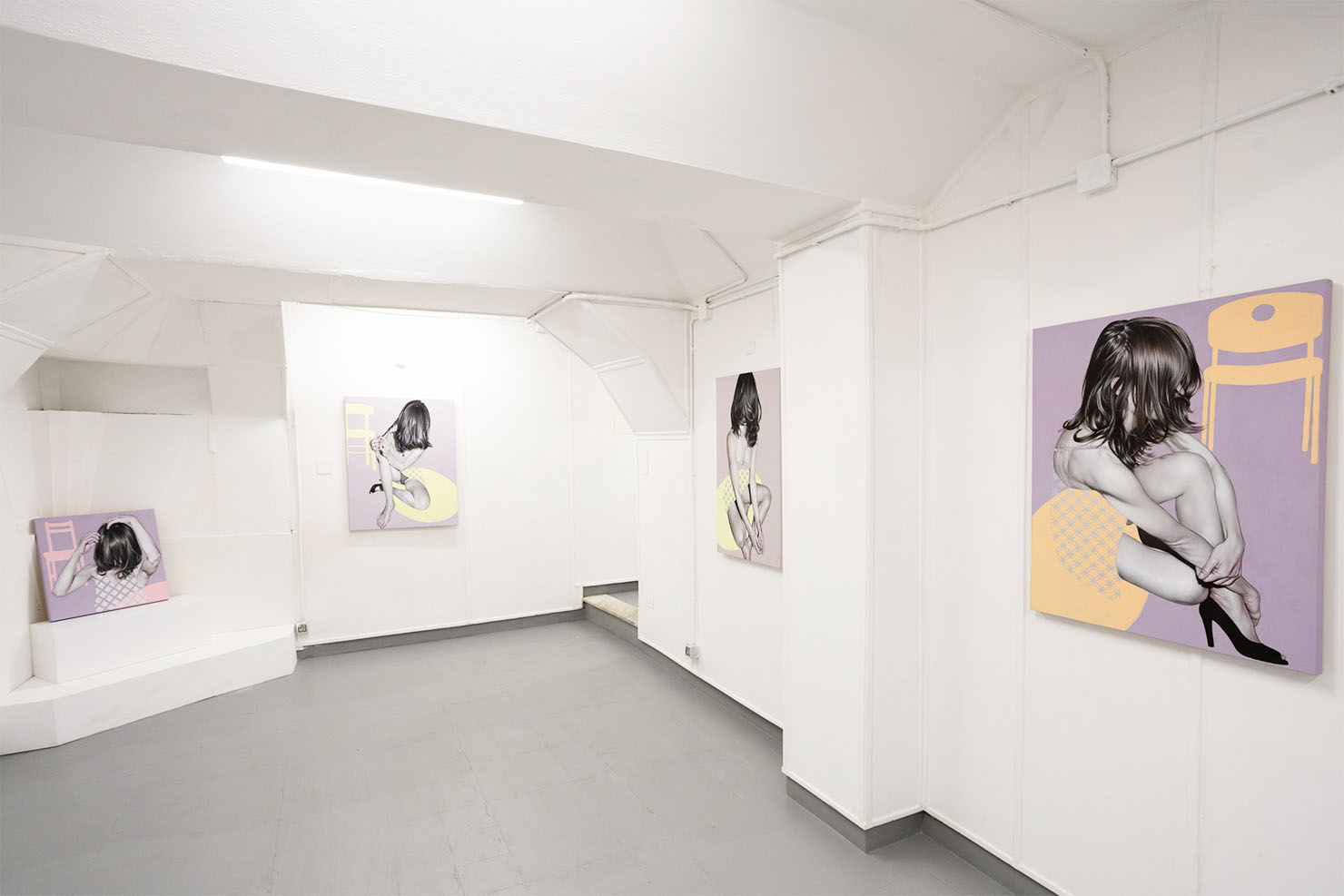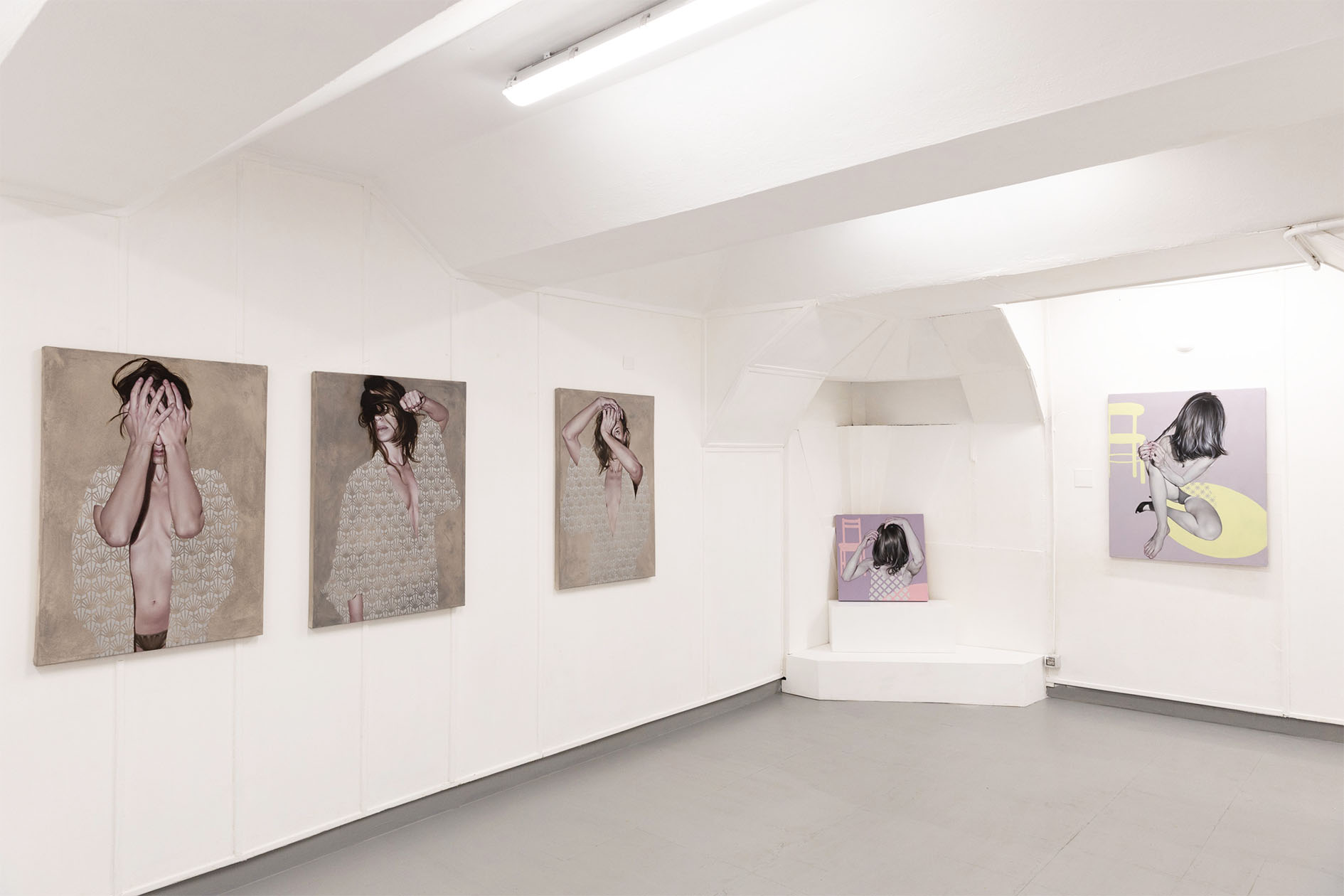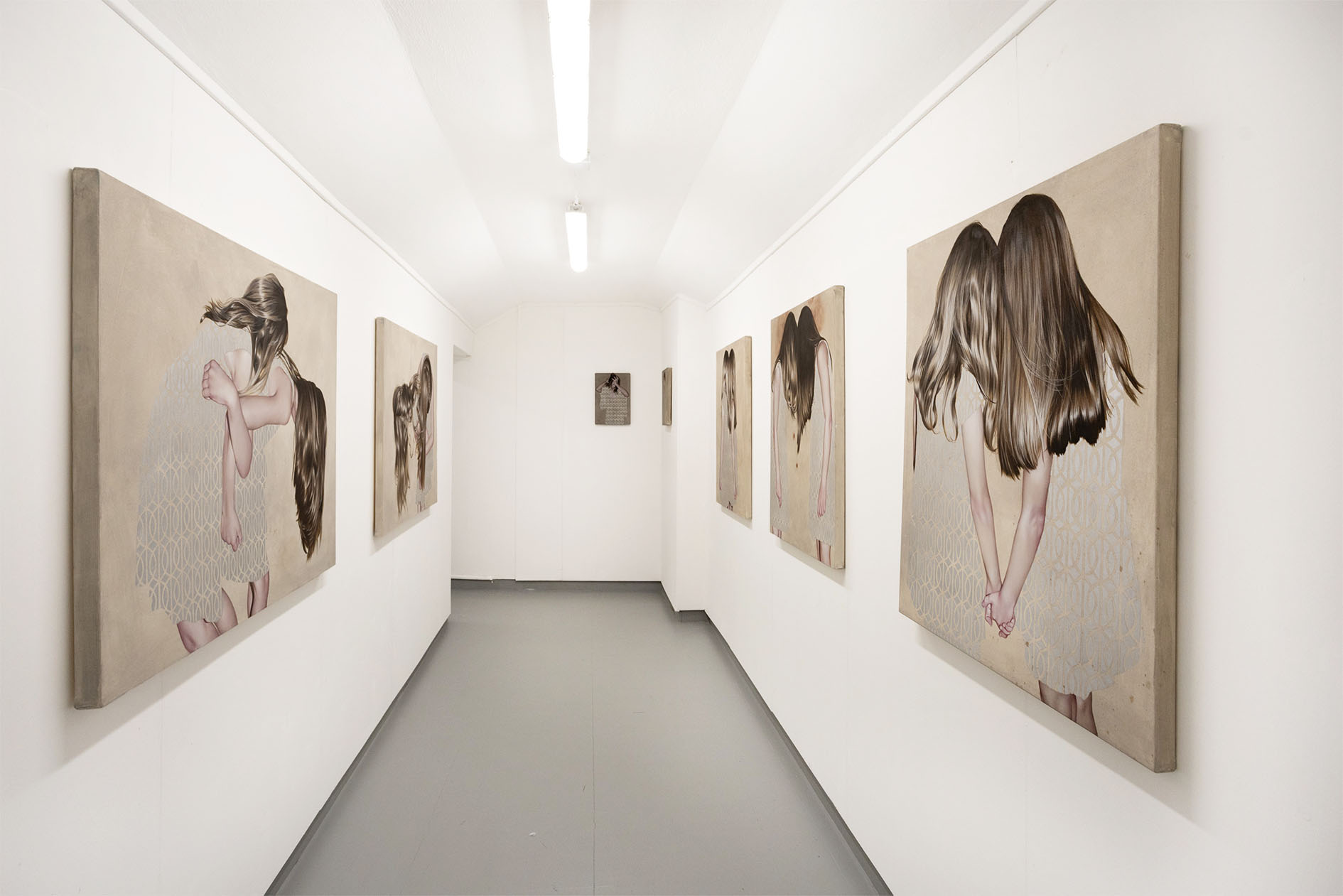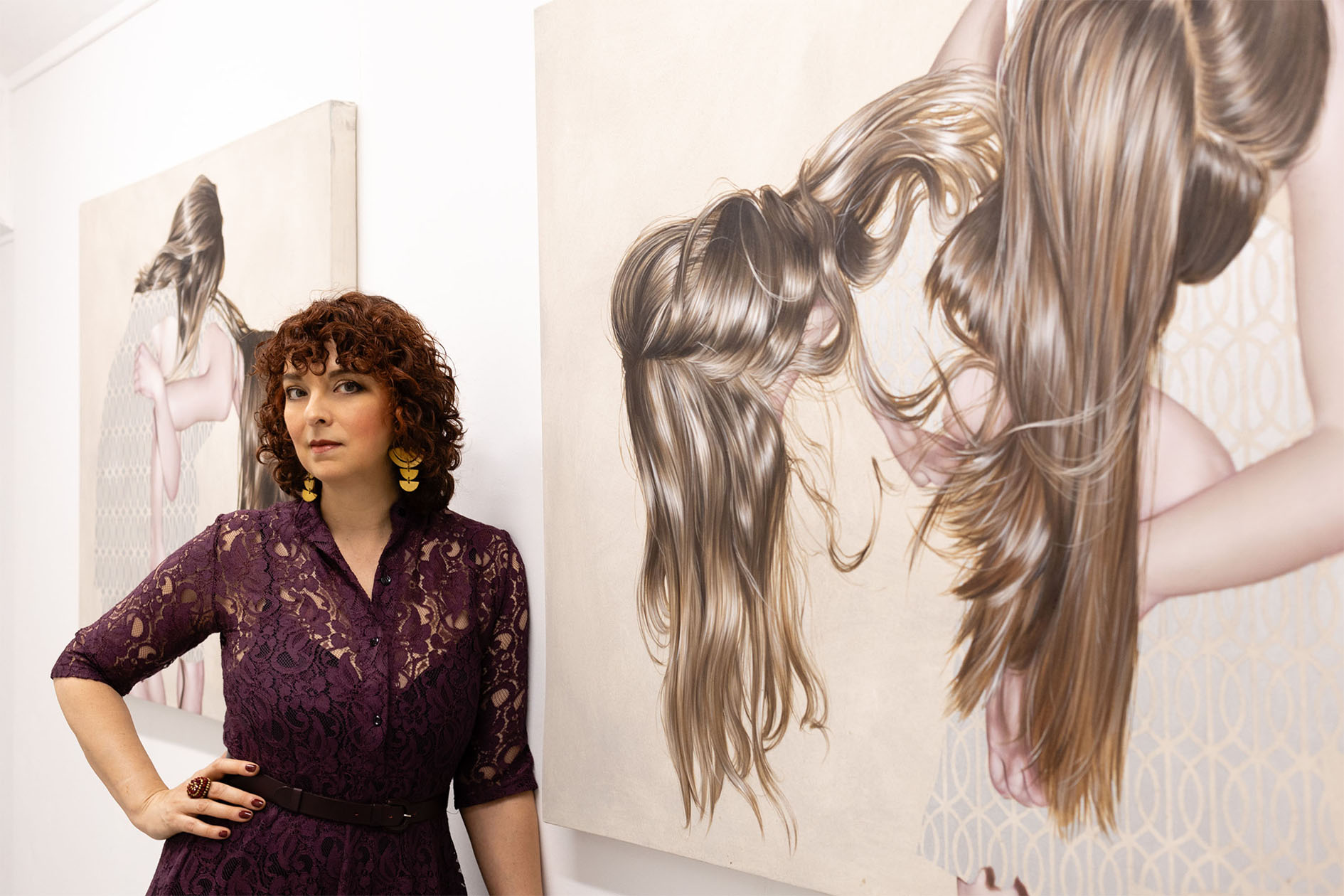5 June 2025| Via di città, 49 – siena
5th – 30th June 2025
Violetti Arte Contemporanea is pleased to present the solo exhibition by Antonella Cinelli, Essere come essere con, curated by Francesco Savini and Elena Violetti.
The exhibition includes works from the artist’s most recent production, focusing on the theme of human connection and interpersonal bonds, developed as a continuation of the project LIBERI! 80 dalla Liberazione, promoted by the ANPI of Bologna.
Antonella Cinelli reflects on the deep relationship between self-knowledge, the formation of our identity, and the importance of difference and contact with others. It is not a matter of defining oneself through oppositional dynamics, but of learning to inhabit the other, to bear the weight of existence, and in doing so, to seek contact with ourselves and with the world. In her most recent research, the artist explores these themes beginning with the most intimate physical encounter: the embrace — an ancient and universal gesture capable of conveying meaning without the use of words. An expression of affection, but also a symbol of resistance, the embrace becomes a moment in which an everyday behavior transforms into a complex narrative, synthesizing both collective and individual experiences into an interweaving of fragility and strength.
Antonella Cinelli’s art becomes a tool of collective and familial memory, and the preparatory works for the twelve Bolognese canvases form a sort of family album that recounts an intimate yet universal story.
The embrace is an act of protection that becomes essential in times of crisis, fear, and pain — a source of security and comfort. It is a form of relationship, but also a silent barrier against dissolution, emptiness, and fragmentation. It is the will not to surrender, not to be separated. For this reason, the embrace is liberation: it is the moment in which arms are laid down, walls are broken, and one entrusts oneself to the other. It is the point where the individual, as a mirror of humanity, is freed from the burden of isolation and solitude by finding strength in relationship. The embrace is the meeting point between those who have resisted and those who have brought liberation, between those who offer and those who receive — looking beyond pain toward a horizon of hope. It is a silent dialogue in which the self participates in the other, welcoming them in their otherness, in their difference and uniqueness. It is the first need we feel when we are reunited with a loved one from whom we have been separated for a long time.
Every embrace tells a story of unity, comfort, and hope — the emotion and joy of reunion, the human need for solidarity and togetherness. In this sense, the embrace is also a political project: it is a metaphor for the reconstruction of a divided and heterogeneous community. A community that embraces is a community that acknowledges its own vulnerability and chooses to care for itself by healing historical and social wounds through closeness and empathy, with the strength to imagine a new and different future.
In this sense, the moment of liberation also passes through the existential power of the embrace, which defines both its external and internal character — a journey toward awareness, authenticity, and harmony with the world and with oneself. Through the breaking of chains — both visible and invisible — that limit the human being in their full expression and realization, the embrace becomes the most powerful gesture of liberation from those external forces that constrain and crush the individual, relegating them to the realm of “thingness” and stripping away all that is human in humanity.

